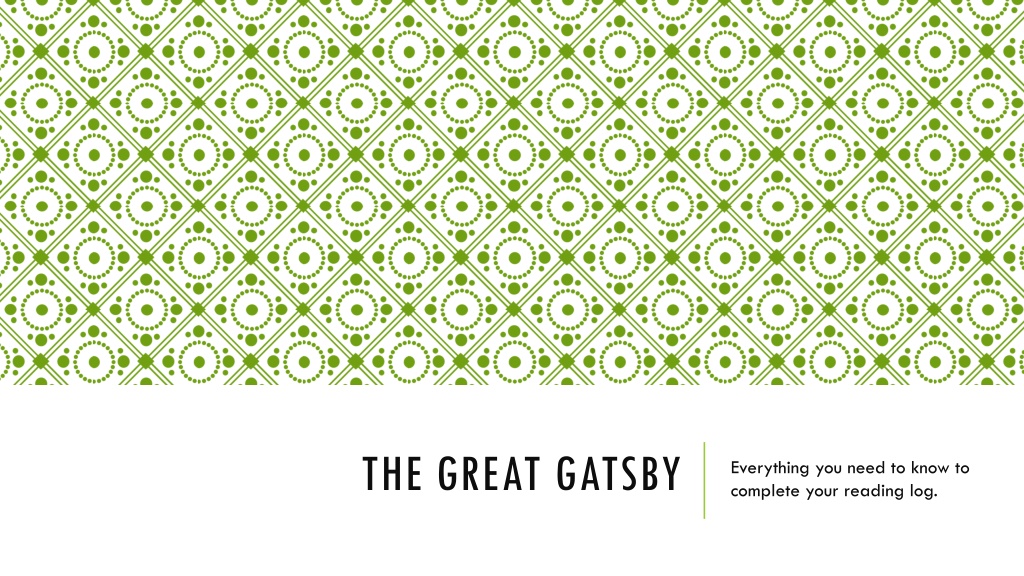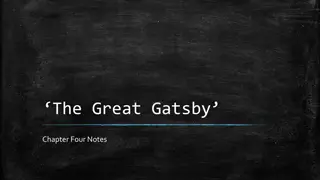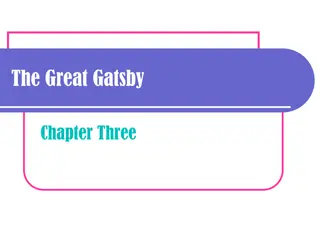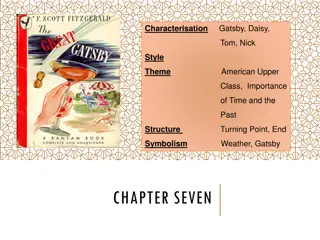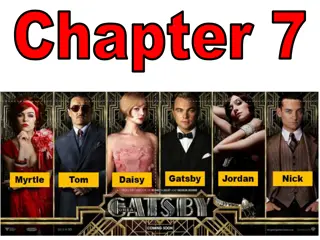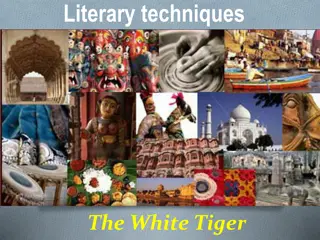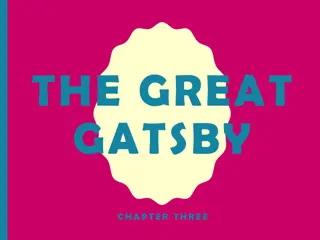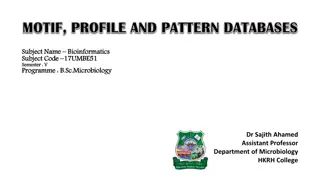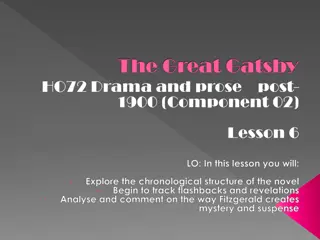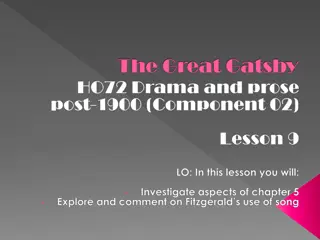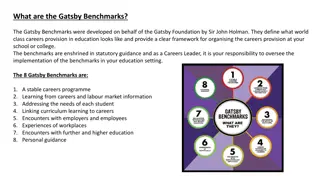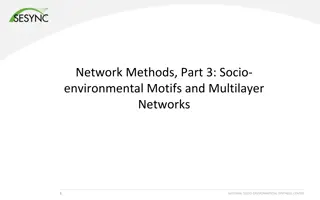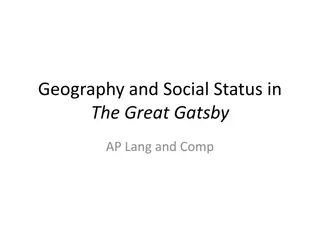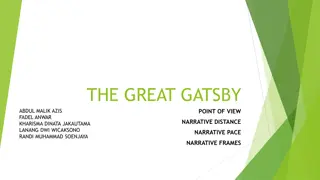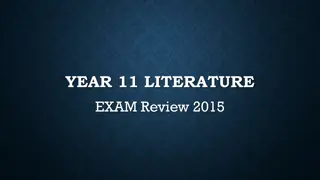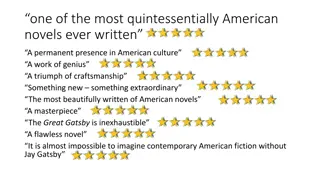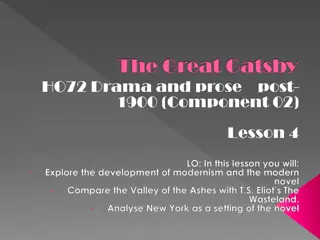Understanding Motifs and Symbolism in "The Great Gatsby
Explore the color symbolism and motifs in "The Great Gatsby," including green for optimism, yellow for corruption, and the recurring motifs of weather and the green light. Understand the deeper meanings they convey and how Fitzgerald uses them to enhance the themes and mood of the novel.
Download Presentation

Please find below an Image/Link to download the presentation.
The content on the website is provided AS IS for your information and personal use only. It may not be sold, licensed, or shared on other websites without obtaining consent from the author. Download presentation by click this link. If you encounter any issues during the download, it is possible that the publisher has removed the file from their server.
E N D
Presentation Transcript
THE GREAT GATSBY Everything you need to know to complete your reading log.
COLOR SYMBOLISM Green Optimism, hope, vitality, the future Gold Wealth, opulence, old money Yellow Falsehood, corruption, moral decay (faded gold) White Innocence, purity, childhood (notice the irony at the end of the book) Grey despair, lack of emotion, dismal (The Valley of the Ashes)
WHAT IS A MOTIF? Motif: A unifying element in an artistic work, especially any recurrent image, symbol, theme, character type, subject, or narrative detail. A given motif may be unique to a work or it may appear in numerous works by the same author or different authors. (Source: Bedford Glossary of Critical and Literary Terms, pg. 277)
WHAT IS A MOTIF? Recurring structures, contrasts, or literary devices that can help to develop and inform the text s major themes A motif may be: a literary element used repeatedly in one text A recurring image or symbol An element present across a single piece of literature or across various genres of literature
MOTIF = RECURRING SYMBOLS, THEMES, DEVICES MOTIF An object, idea or structure that occurs again, and again, and again in a piece of literature. SYMBOL THEME DEVICES An abstract idea which represents a deeper meaning. The unifying general idea about life conveyed by a piece of literature. The use of a literary device such as imagery, repetition, juxtaposition, etc. Examples: Examples: Examples: The predatory nature of human existence Of Mice and Men Juxtaposition of Lenny and George Of Mice and Men Rabbits Of Mice and Men Mockingbirds To Kill a Mockingbird The use of gothic details To Kill a Mockingbird The importance of moral education To Kill a Mockingbird
MOTIF AND GATSBY Green Light Light at the end of Daisy s dock. The light can be viewed from Gatsby s mansion across the bay. Think about what the green light symbolizes and how Fitzgerald uses it in the novel.
MOTIF AND GATSBY Weather/Seasons Summer, fall, rain, heat, clouds Look at how Fitzgerald uses weather to foreshadow events and create mood.
MOTIF AND GATSBY Eyes The eyes of Dr. TJ Eckleburg Owl Eyes in the library Look at how Fitzgerald uses eyes in certain locations/scenes throughout the novel. Think about what these eyes symbolize.
MOTIFS AND GATSBY East/West and Geography East established, tradition West New frontier, nouveau riche Think about how Fitzgerald uses these locations to characterize the people who live there.
oThe disillusionment of the American Dream oWealth breeds carelessness and corruption oAttempts to relive the past are doomed to fail THEMES
RHETORICAL DEVICE Look for ideas such as o diction (remember to use a descriptor) o syntax parallelism, sentence length and variety (remember to use a descriptor) o Figurative language metaphors, similes, imagery, personification o Allusion
